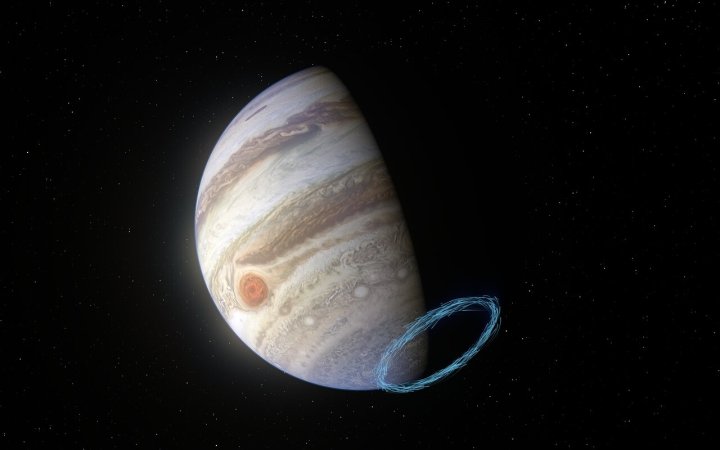
Many of Jupiter’s famous features, like its distinctive stripey appearance and Great Red Spot, are due to the high winds which swirl in its atmosphere. But this isn’t a simple system: The planet’s lower and upper atmospheres both have distinct wind patterns, but researchers still aren’t sure exactly how the two interact. Now, a team has measured winds in the planet’s middle atmosphere, or stratosphere, for the first time, uncovering a dramatic system of powerful winds which could be unique in the solar system.
The reason it’s tough to measure winds in the stratosphere is that there aren’t clouds at this level, so the winds can’t be measured by cloud tracking. Instead, a team used the Atacama Large Millimeter/submillimeter Array (ALMA) to measure molecules of hydrogen cyanide that were released when a comet collided with Jupiter in 1994, and that have been floating along the stratospheric winds since.
They found winds of up to 900 mph near Jupiter’s poles which whipped around in narrow bands called jets. This is twice as fast as the winds in the enormous storm which forms the Great Red Spot, and three times the speed of winds in the strongest tornadoes here on Earth.
“Our detection indicates that these jets could behave like a giant vortex with a diameter of up to four times that of Earth, and some 900 kilometers [560 meters] in height,” explained co-author Bilal Benmahi of the Laboratoire d’Astrophysique de Bordeaux in a statement.
“A vortex of this size would be a unique meteorological beast in our solar system,” said lead author Thibault Cavalié.
This came as a surprise, as although strong winds have been observed high in the planet’s upper atmosphere, researchers expect that these would lessen as you go deeper into the atmosphere, and disappear altogether by the time you reach the stratosphere.
The researchers hope that this region can be studied in more detail by the upcoming JUICE mission which will be launched in 2022.



